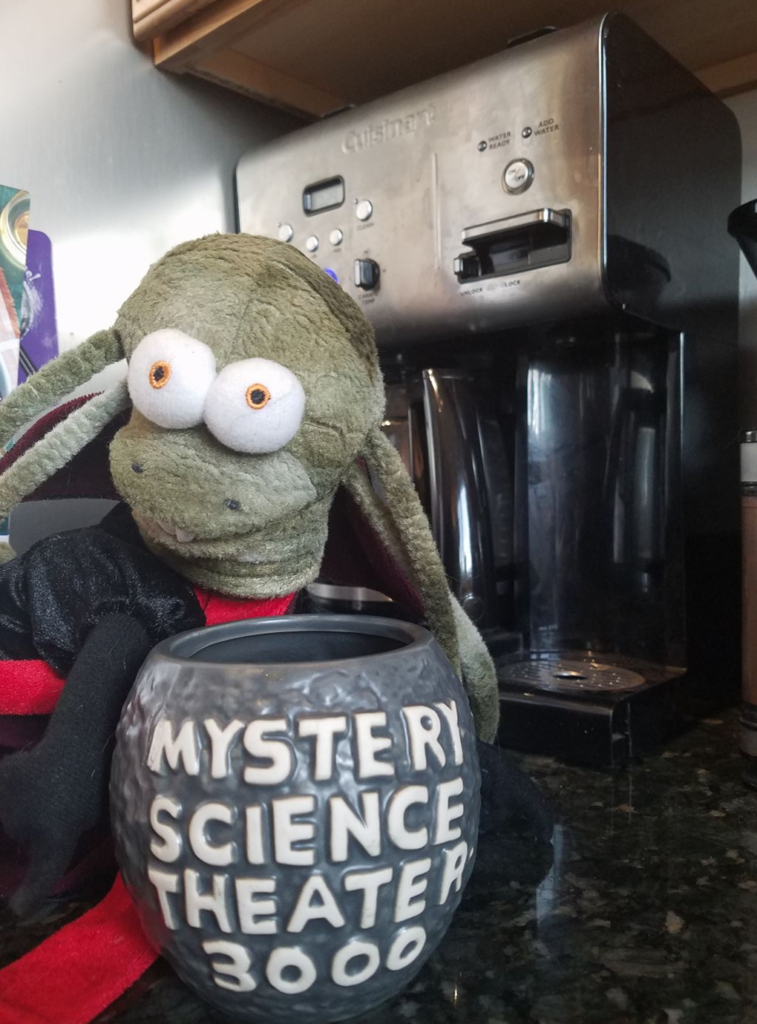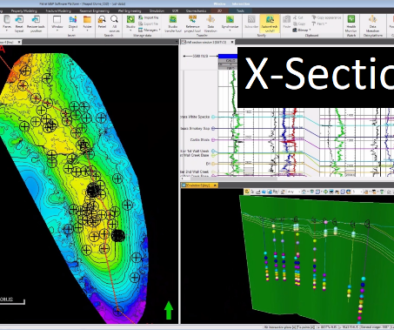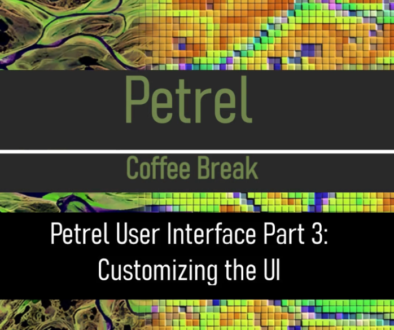What it’s all about
“The first draft is you just telling yourself the story.”
-Sir Terry Pratchett
Well hello there. This is Model Space, and I am Christopher Dorion.
This whole blog idea started as a part of a personal project to learn how to design a basic webpage, and the idea of a blog sort of evolved as a natural conclusion of that experience. My site ended up with a lot of my professional life on it, I spend a good part of that time on education, training, and mentoring, so this seemed a natural extension.
So what the heck IS this blog all about?
Geomodeling
Geomodeling at its most fundamental level, is the science of building digital representations of the Earth’s subsurface based on observations, measurements, and our understanding of the geologic environment.
Basically, taking what few observations we have, and figuring out what a three dimensional chunk of Earth around those observations will look and act like. And then, actually making a digital version of that chunk of Earth, which will be used to make a lot of decisions.
It’s a tall order. Often times, you do not have a lot of data to use- especially in exploration. The tools you use to build these models will differ depending on what data you have, and how much of it you have. Some of these tools are pretty basic (for instance, taking the average of a dataset), and some can get pretty mathy, involving piles and piles of linear algebra. I want to demystify some of these tools, how they work, how they are used, and in what situations you should use them.
Data Science
Geology has for many years been an observational science. We struck a fine balance between the qualitative and quantitative realms, because let’s face it- the mathematics and the physics of deposition and preservation are insanely complex, and many things we’re interested in within the rock record consists of short bursts of events which happen suddenly, and are highly subject to chaos (think turbidites). Moreover, what quantitative measurements we can get are few and far between- If you look at the reservoir in half foot blocks (the sample rate of well logging in the US), we often have direct samples for less than a trillionth of the dataset. Even more, the underlying relationships between depositional history, fluids, chemistry, tectonic events, diagenesis, bioturbation, etc means things get jumbled, and chaos reigns

But there is a signal there, it’s just really complex. One of the big questions right now, is can the toolbox of data science and machine learning help us? I will be taking some time to talk about data science methodology, and some of the algorithms we can use in the geosciences, with a focus on geomodelling workflows.
Software
I’ve been working with SLB, using Petrel in my projects for a long time. In fact, my very first job in the industry was as a support geoscientist. When I received a job offer from Big Blue fresh out of school, I came in the first day, and was immediately placed in a 9 week software boot camp of sorts. This program unceremoniously launched me at every single Petrel training course available at the time, and scraped off the pieces that stuck. After getting through that, I was given a desk, some instructions on how to answer the phone, and was told, “good luck, and have fun”. ?

…I can tell you first hand that working on the helpdesk is the fastest, and SCARIEST way to learn a software. Needless to say, a lot has changed since then, but the point is, I learned to put out fires.
Therefore, I will devote some time to Petrel instructionals, tips and tricks, tutorials, etc. I will also be using Petrel when discussing modeling related algorithms and workflows. If you already use it, hopefully you find these useful. If you don’t, then just follow the other stuff, as I will make other topics as software agnostic as possible.
Whatever else I feel like blathering on about

At its heart, this is my personal website, and my personal blog. That means in short, I do what I want! While I’ll keep the focus on the topics above, I’ll write the odd post on homebrewing beer, and brewing science in general. Other topics might include backpacking and mountaineering, motorcycling, 4-wheeling; birds and reptiles (I have a couple). I’m just starting this thing out, so who knows what it will evolve into.
Just be prepared for some general geekery outside of rocks and numbers to pop up on occasion.
So what is this blog NOT about?
Mathematical proofs and deriving equations
Nothing against jumping neck deep into the math, but there are plenty of both free and paid resources already out there on the mathematics and coding of geostatistics, machine learning, differential equations, etc. That is not what this blog is about. My wish instead is to write about how these methods can be used in the geosciences, with a focus on reservoir characterization, and keep it simple while still being useful. This means if you are visiting this blog as an experienced geostatistician or data scientist… most of what is here might be pretty basic for you. If you are a geologist or geophysicist new to geomodeling, or you want to brush up on the tools you are using without digging (too deep) into the math and jargon, then you might find something useful here.
A woodworker does not need to become an expert in electrical and mechanical engineering in order to use a table saw; However if he wants to tweak or make adjustments to the saw for some specific cuts, it certainly helps to have a basic understanding of them. This is the same approach I will take here. We will open the housing and see how the tablesaw works, maybe make some adjustments to it here or there, but we won’t be designing tablesaws.
WHAT is the algorithm generally doing, HOW does it work, and HOW can you use it in the geosciences?
Selling software
This is not a “come to Jesus” blog, and I will not be selling software here. Yes, I work for SLB, yes, they sell software, and yes, I provide geoscience services in my day job through them- but here’s a not so secret- secret:
I would make a horrible sales person.
I’m a nerd who likes geology, computers, and seeing how the two work together. I use a specific tool for this, because I know it pretty well and have access to it for demonstrations; but if you have something else you like, cool!
Anyway… I hope you enjoy. I hope I enjoy. Let’s see what this thing evolves into.



